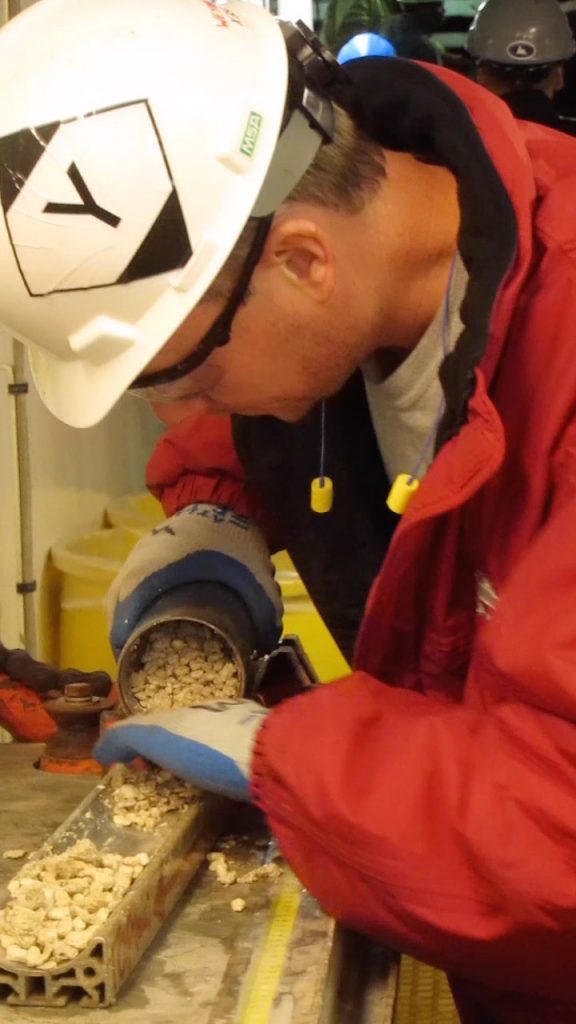
A slight impediment to our sediment
The first coring has NOT run entirely as planned. The scientists had their tools ready at 7pm, eagerly awaiting the first core. For many, this is their first expedition with the JOIDES Resolution, and the whole process is new and exciting (and a little mysterious).
By 8pm, they were clustering at the railing, watching the crew moving tubes about on the rig floor. Is that tube the core? What about that tube? Why are there so many tubes? What do all these tubes even do?
By 9pm, excited waiting was replaced with anxious pacing, and staring at screens. What do these numbers mean? Where is the core? The technicians had replaced their steel-capped boots with sneakers, and were sitting inside. Clearly the 15-minute perfect core turnaround was not going to happen.
The first core finally arrived a little after 3am in the morning and it was not the perfect tube of sediment we had hoped for. Turns out we’re drilling into a large amount of carbonate clasts, chunks of coral-like material built up by algae. This is not good news when we’re using the Advanced Piston Corer (or APC), because it works by thrusting a solid steel tube into the sediment, and pulling the core out. Like sticking a drinking straw into a lasagne to get a perfect lasagne tube (You do that, right? No? Just me?). With the large chunks of carbonate, the APC can’t penetrate, and can’t pull out a neat tube of sediment.

We tried a core with the eXtended Core Barrel, which rotates while coring, and retrieved NOTHING, which means the pebbly sediment may getting swept away by the rotation and circulation of drilling fluid.
Plan C? Try a half-length APC. This gives us more power over a shorter distance, which might let us punch through the carbonate sediment.
Since the core segments we’ve recovered are all jumbled, that means the sedimentologists, paleomagnetists, and physical properties teams have very little to work with right now. On the bright side, the palaeontologists are happy as benthic forams; they don’t need perfect recovery, since they work on the jumbled sediment from the bottom of the barrel anyway. So they’re hard at work identifying the fragments of tiny creatures in the sediment, while the other teams hope for better luck with the half-APC.

More bulletins as events unfold!